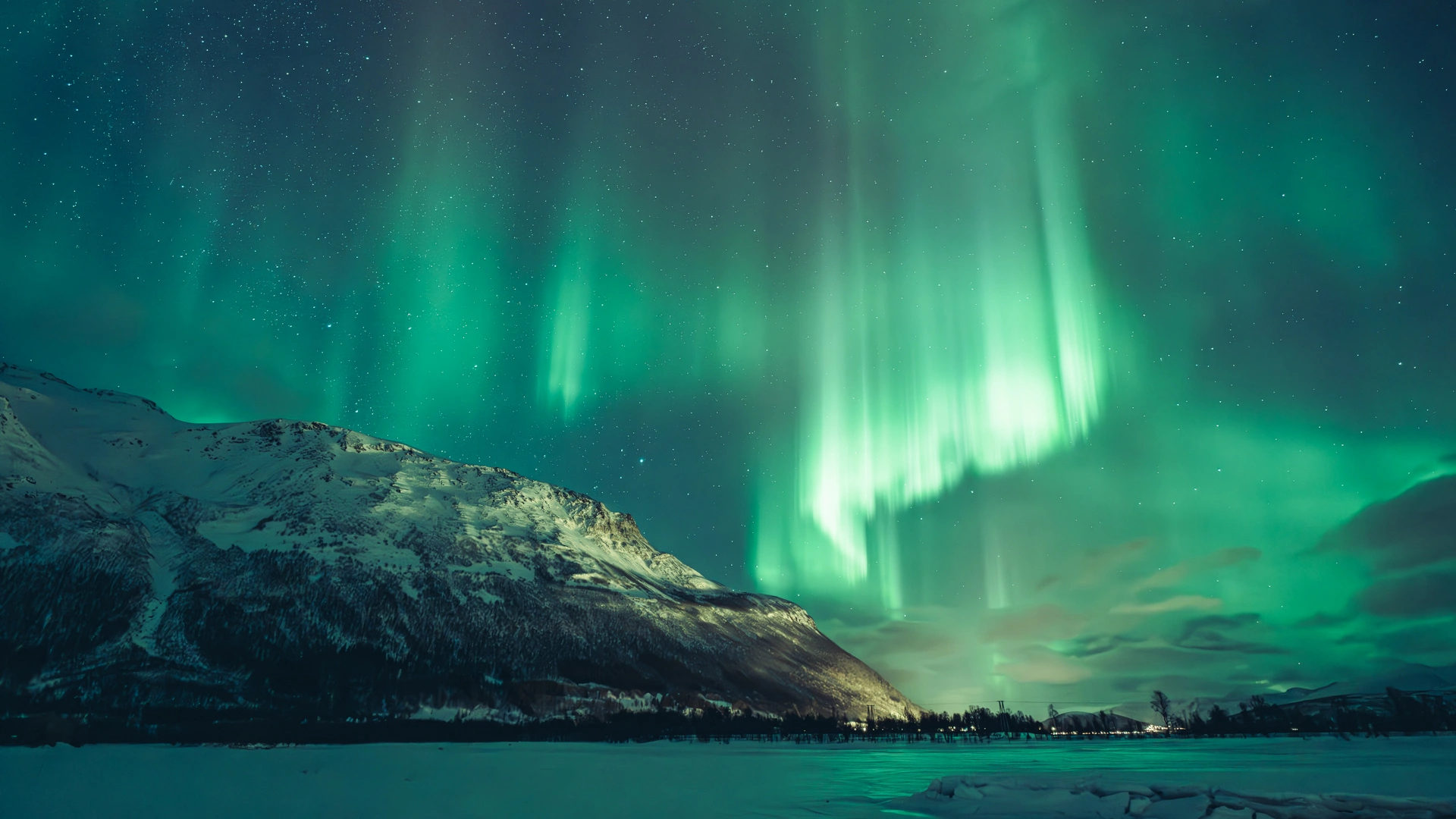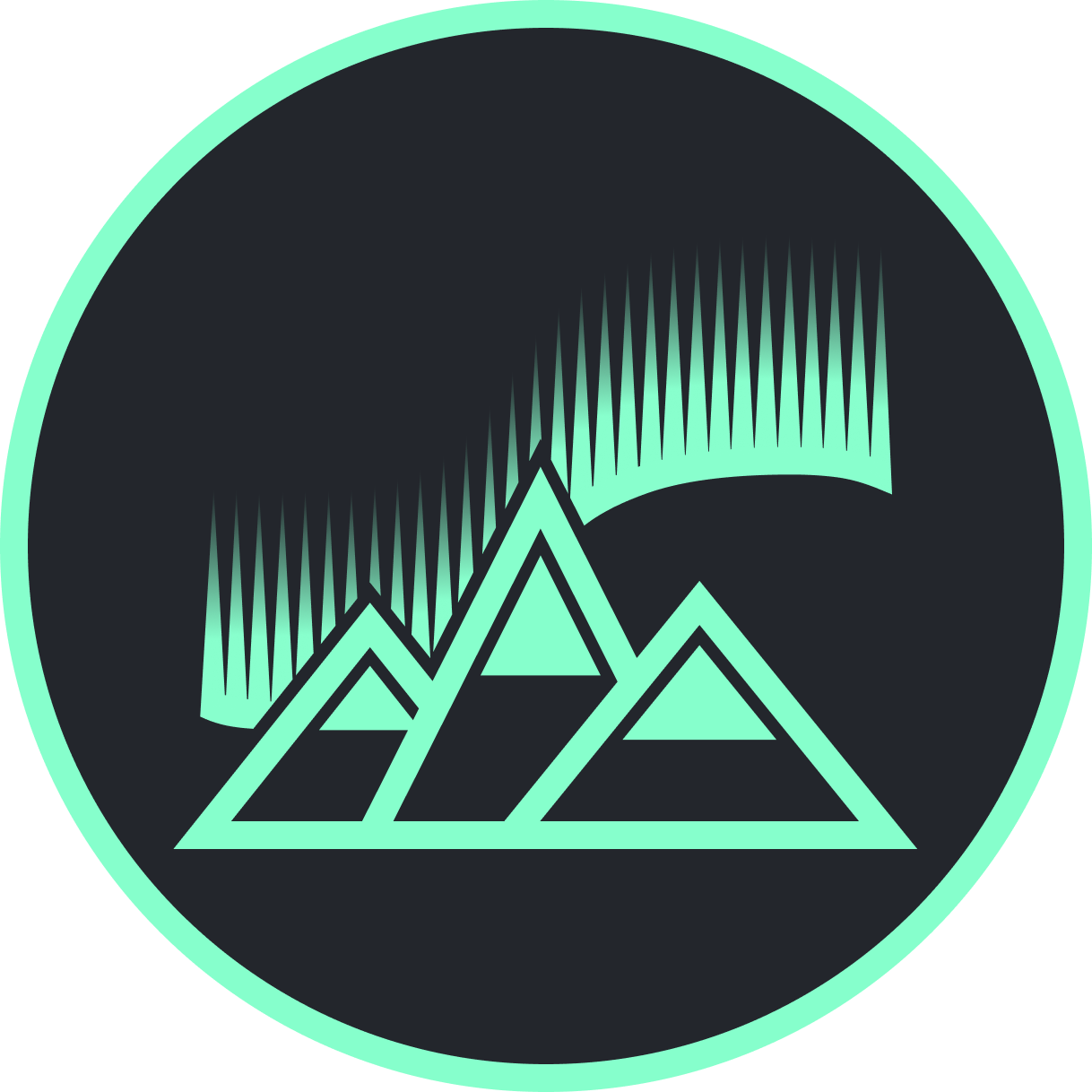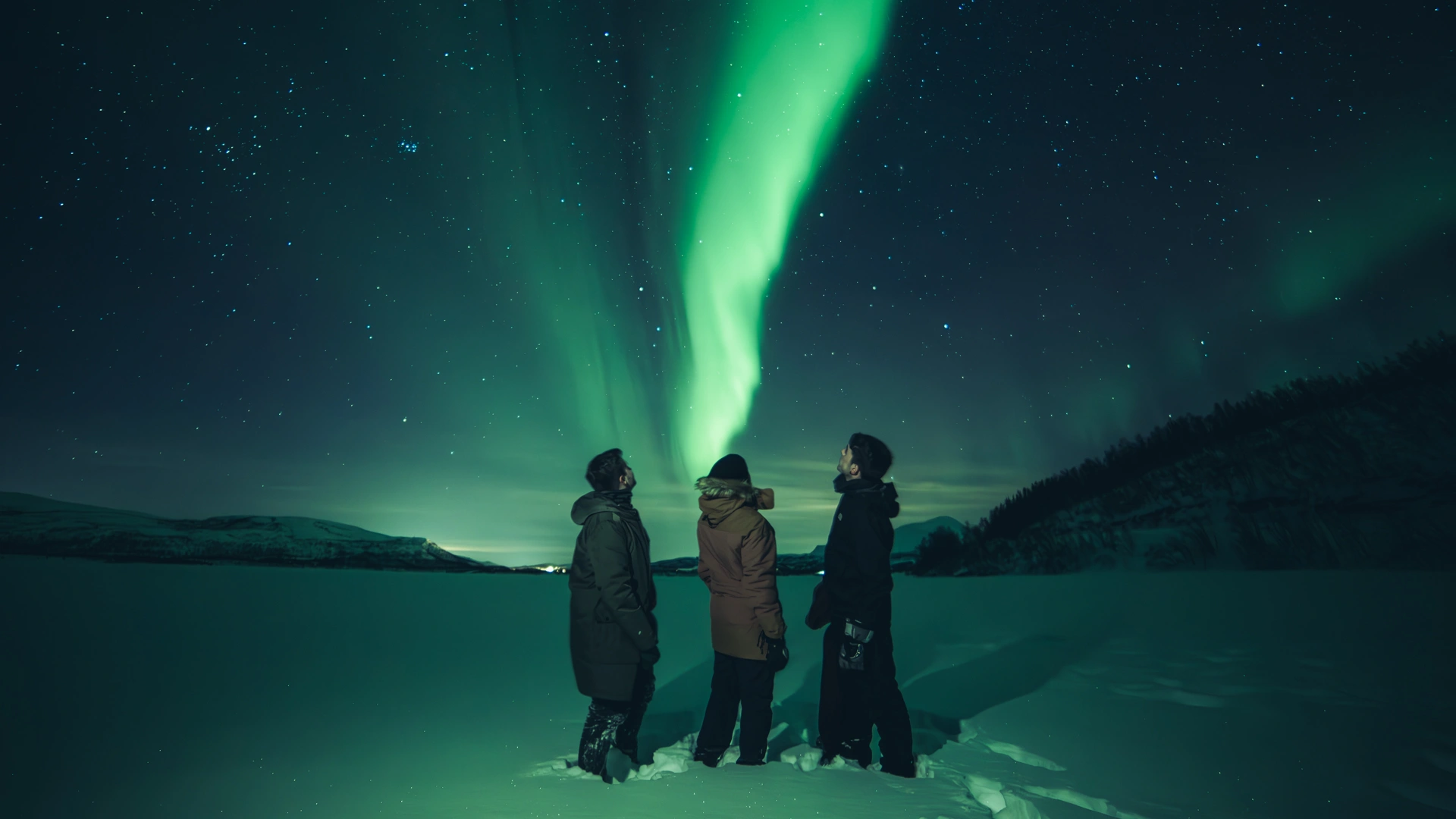Questions about the Northern Lights
When is the best time to see the Northern Lights?
The best time of year to see the Northern Lights is when it’s dark enough in Northern Norway. During the summer months the Northern Lights won’t be visible to the eye, simply because it’s too bright. Between October and March it will be dark enough to reveal the Northern Lights. Personally, I believe between the beginning of December and the end of February is the best time to see them. This is the time when the nights are longest and darkest and also the chances of snow are higher. Nothing beats vibrant Northern Lights together with a beautiful snow covered Norwegian landscape.
Is Tromsø a good city to see the Northern Lights?
Tromsø is probably the best city in the world to see the Northern Lights. It is located just below 70 degrees north which makes it perfect to observe most of the yearly appearing Northern Lights. While being so far north it is thanks to the gulf stream, with around -9 degrees celsius in December, much warmer then you might expect. Tromsø is the largest city in Northern Norway and because of its beauty and rich culture known as the “Paris of the North”. Especially in the winter times when Tromsø becomes a snowy winter wonderland you can do various activities like Dog Sledding, snowmobiling and many more. Because of its location close to the coast and different microclimates the weather changes almost on a daily basis which gives you a good chance to get some nights with clear sky on a week long trip.
Are the Northern Lights visible every night?
The Northern Lights are particles from the sun who react with the magnetic field of our earth. What we need to see the Northern Lights are those incoming particles, it needs to be dark enough and clouds should block the view. As long as you have all these things together you will be able to see the Northern Lights. Usually we spot the Northern Lights most of our tours. Sometimes however, if the incoming particles are too few and the reaction is too little or dense clouds in the whole area stay with us for the time of our tour, then there might be a little chance that we don’t see them.
Is it possible to forecast the Northern Lights?
Yes and no. Long term forecasts (longer than 3 days) are usually very imprecise. Short term forecasts (less than 3 days) can give you a good idea what to expect, even though you still might be very surprised about the results. Live data from a satellite who measures the incoming solar particles can give you the best results but it’s pretty difficult to read without experience. There are many apps out there to help and illustrate the Northern Lights activity but overall they are not reliable without the needed expertise. Our Guides are very experienced in this field and monitor the Northern Lights activity during the whole tour.
Do the Northern Lights always appear the same?
No, the Northern Lights are unique every time they appear. Sometimes they can be strong, sometimes faint. Sometimes they dance like crazy in the sky and other times they appear as a more unmoving band. Sometimes they seem further away in the north and sometimes they are right above your head in the sky. You’ll never know what you get until you get it.
Will I see the vibrant colors of the Northern Lights with my own eyes?
The colors of the Northern Lights appear different on photos then you will see them with your own eyes. Cameras and post processing make the colors much more intense. However, the stronger the Northern Lights get, the more intense the colors become.
Is the weather affecting the visibility of the Northern Lights?
The Northern Lights appear far higher than the clouds and therefore it is possible that clouds cover the Northern Lights. The thickness of cloud layers can vary and sometimes be transparent, where you will still be able to see the Northern Lights trough, but other times too dense to see them. This is why you need an experienced Guide to maneuver you to areas with the least dense cloud coverage.
What if the weather is bad on the tour?
While the winter is the best time to see the Northern Lights, unfortunately it’s also the time with the worst weather. Some nights are clear and dry, other nights are cloudy and wet. The good news is that whatever weather we have, there is always a chance to see the Northern Lights. This is because the weather in the Norwegian Arctis can be very unpredictable and fast changing. The close distance to the coast, high mountains and fjords can create microclimates. That means that it might be cloudy on one side of the mountain while clear sky on the other side. A chase is called a chase because no matter how bad the weather, we always give our best to find the gaps in the clouds to reveal the stunning Northern Lights.
Is it guaranteed to see the Northern Lights?
Since the Northern Lights are a natural phenomena and depend on factors beyond anybody’s control, unfortunately no one can guarantee that you will see them. However, we can guarantee that we will try our best to find them.
Can I get a refund if I don’t see the Northern Lights?
We always try our best to give you the Northern Lights experience that you would expect but because the Northern Lights are a natural phenomena we unfortunately can’t guarantee their appearance and therefore can’t offer a refund if you don’t see them on one of our tours. We always recommend booking multiple tours to increase the chance of seeing them on your trip.
Details
Questions about the tour
How long will the tour take?
The tour will take between 6-7 hours. This will depend on factors like the Northern Lights activity and driving distance.
How many stops will there be during the tour?
How many stops the bus will stop can vary each tour and depends on the weather and Northern Lights activity. On a night with clear sky and low Northern Lights activity it often is best to stay at just one spot and wait for the Northern Lights to appear. On a night with high cloud coverage it’s better to keep driving and occasionally make a stop if a gap in the clouds opens up. On a night with consistent Northern Lights activity and clear sky it might make sense to more than one spot just to have a change of landscape. All this depends totally on the decision of your experienced Guide, he will always have your best interest in mind.
Which direction will the bus go and how long will the drive be?
The drive can last anywhere from 30 minutes to 2.5 hours (one way). This will depend on various factors like weather conditions, cloud coverage, road conditions, Northern Lights activity etc. We always prefer to keep the driving time lower for you but sometimes it’s necessary to drive a long way inland for the best chances to see the Northern Lights.
Is there a toilet available?
Yes, there is an on-board toilet available in the bus.
Will I be on the bus the whole time?
You can if you want, but normally the tour is a mix between being in the bus and stopping, either because the Northern Lights are there or because we wait for the Northern Lights to appear. However, the bus stays with us the whole time and keeps warm so that you can rewarm yourself in it whenever you feel like it.
Can I see the Northern Lights from inside the bus?
Even though it is sometimes possible to see the Northern Lights through the windows it’s a better experience to see them from outside. Normally we will find a close by spot to stop as soon as the Northern Lights appear.
Are water and snacks included?
Water and snacks are not included in the tour. It is highly recommended to bring a bottle of water and some easy snacks like nuts, fruits, crackers, cookies etc. You can also bring an insulated bottle with some hot tea or chocolate (please drink outside of the bus), this helps to keep warm in the cold.
Will it be very cold outside the bus?
Anything between 0 and -40 degrees celsius is possible on this tour, the average being around -10 to -15 degrees. Keep in mind that you can always rewarm yourself in the bus, especially on longer stops.
What should I wear?
The hands and feet will get cold the quickest. Warm socks, water-resistant winter shoes and good gloves are a good start. A thick hat is also important because we lose a lot of heat over our head. Next, a thermal base layer (wool or polyester) is recommended, the same kind as you would use for ski sports. For pants you can use your normal pants or warm pants like sky pants. A warm sweater (best wool or polyester – no cotton) is a good idea. Then a warm winter jacket, scarf or buff and you are good to go. This is a recommendation to keep warm while being outside the bus, if you don’t have the mentioned clothing don’t worry the warm bus will always be close by.
Questions about photographing the Northern Lights
Can I use my phone to take photos of the Northern Lights or do I need a camera?
Modern phones especially Iphones and other phones with good cameras are doing a decent job in photographing the Northern Lights. However, if you have a camera with a bigger sized sensor (Full Frame, APS-C or MFT) you can expect higher quality photos. Point and shoot cameras are often on a similar level as phones.
Should I bring a tripod for my camera or phone?
A tripod is highly recommended, regardless if you shoot with a camera or phone. Northern Lights photos require a long exposure and only with a tripod it’s possible to get those shots without blur. If you shoot handheld you will always have a slight blur and you can’t expose as long as it’s sometimes necessary. A tripod is also necessary if you are planning to shoot self portraits with you and the Northern Lights.
How can I set up my phone or camera to take the best possible photos?
This depends a bit on the type of phone or camera you are having. Different cameras and phones have more or less manual settings. If you have a camera or a phone with fully manual settings you would set it on manual mode and adjust the ISO around 1600-3200, the aperture value as low as your lens allows (fully open) and the shutter speed between 2-8 seconds (depending how strong the Northern Lights appear). Important to note is that you will need a tripod for these settings, otherwise you will end up with blurry photos. You might also want to set your focus to manual and infinity, since autofocus usually doesn’t work so well in dark conditions.
If your phone doesn’t support manual settings you can try to download a “long exposure app”, this will allow you to set longer exposure times which is what you need to capture the Northern Lights. Here again you will need a tripod to get the best results.
We recommend trying around with your camera or phone before the tour by simply trying to capture the stars at night, this will help you to be ready and not miss the shot when the Northern Lights appear.
Once you join a tour with us, our camera savvy Guide will explain in more detail how to set up your camera or phones and assist you in dialing in the right settings.
What camera and lens would you recommend for experienced Photographers?
The best camera to take Northern Lights photos should have a full frame sensor and good low light capabilities like the Sony a7s III for example. As for the lens choice you should opt for a wide and fast prime lens which is sharp wide open. For example the Sony 20mm f1.8 or Sony 14mm f1.8.


